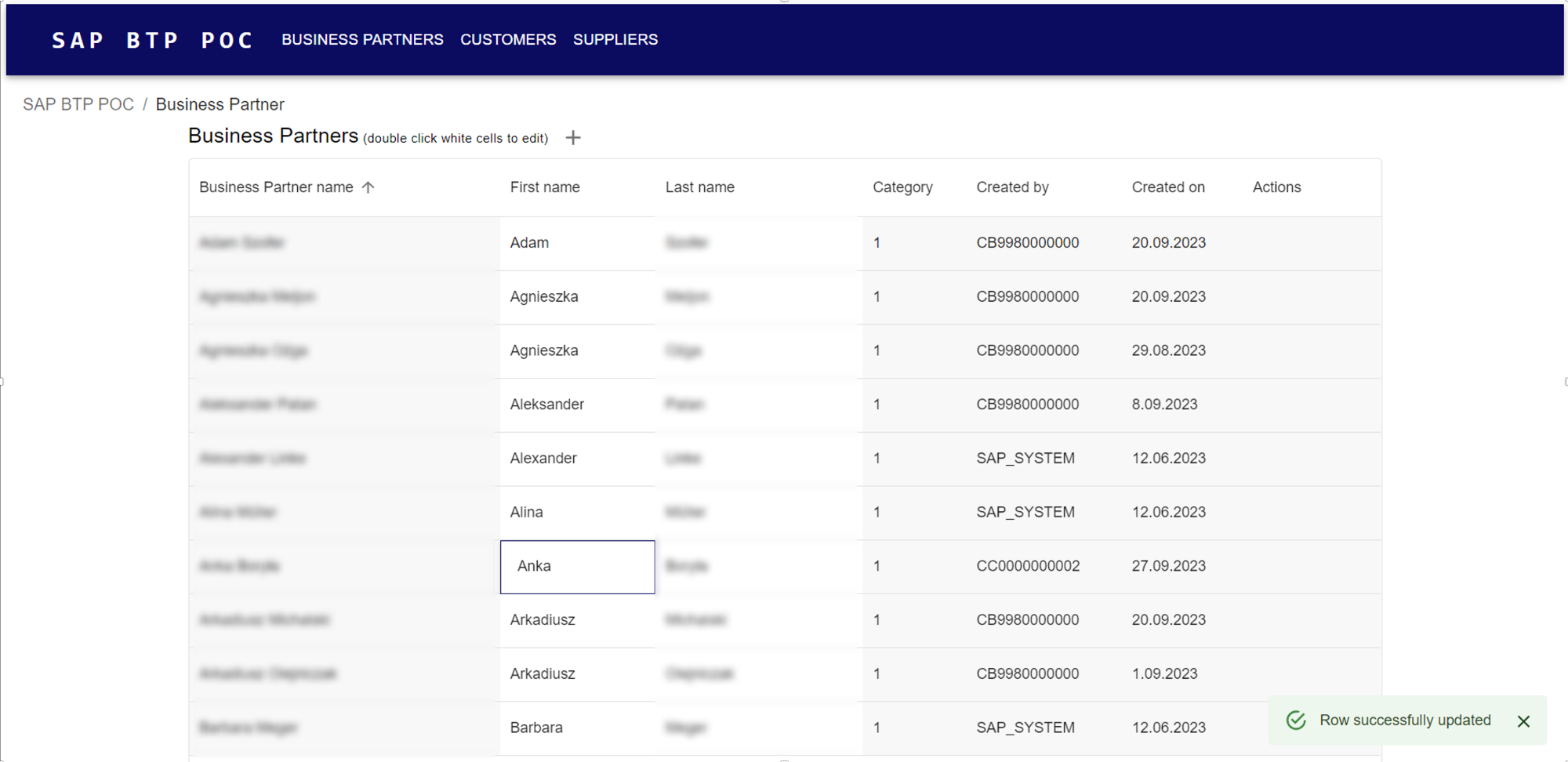As a testament to SAP BTP’s capabilities, we embarked on a Proof Of Concept project, crafting an application that leveraged the S/4HANA API for downloading and modifying business partner information. Our chosen framework, Next.js, played a pivotal role in streamlining both back-end and front-end development through its compatibility with React and JavaScript.

Creating web applications based on SAP BTP
SAP BTP stands out as a versatile platform that empowers organizations to drive digital transformation seamlessly. Without disrupting core applications, SAP BTP facilitates the standardization of the SAP software ecosystem, offering an array of services for software creation, SAP product integration, and data analysis.
SAP BTP stands out as a versatile platform that empowers organizations to drive digital transformation seamlessly. Without disrupting core applications, SAP BTP facilitates the standardization of the SAP software ecosystem, offering an array of services for software creation, SAP product integration, and data analysis.
Cloudfoundry - fostering cloud innovation
SAP BTP offers several environments on which we can base our application. Some of them are devoted to low-code solutions or dedicated to ABAP. We decided to use our experience in developing software based on React and Nodejs technologies, so there were two options to choose from: Cloudfoundry and Kyma.
Kyma, an alternative environment within the SAP BTP ecosystem, is designed to support the serverless approach, providing a comprehensive suite of tools that streamline the development and deployment of cloud-native applications within Kubernetes. The adoption of a serverless architecture is particularly intriguing when confronted with scenarios involving numerous websites, emphasizing the importance of scalability in the overall solution. As organizations navigate the complexities of modern IT landscapes, Kyma stands as a versatile platform capable of meeting the challenges posed by dynamic and multifaceted web-based environments.
Cloudfoundry, in turn, enables simple management and deployment of applications, and is characterized by greater stability. It supports a range of technologies, including Java, Node.js, Go, PHP, Python, Ruby, and .Net Core. In addition, docker images are also supported, which turned out to be useful in our case – instead of building an application in the cloud, which required assigning more resources, we could create a ready-made image locally and then push it to Cloudfoundry using the Cloudfoundry CLI.
The process itself is very simple and comes down to installing the CLI, logging in using the cf login command, and then pushing the docker image using cf push and the docker-image flag. In this step, you can also assign resources (RAM, disk memory). Because of these possibilities, this solution was a better choice for this project.
A comprehensive overview of SAP BTP's impact
The SAP BTP ecosystem, complemented by strategic technology selections such as Next.js and Cloudfoundry, not only offers a robust foundation for developing web applications but also stands out for its multifaceted toolkit tailored for crafting innovative cloud solutions. This arsenal of tools significantly reduces the time required for planning and implementing architecture and infrastructure.
By leveraging SAP BTP’s diverse set of tools, development teams can streamline the intricate processes associated with cloud solution creation. This, in turn, allows them to shift their focus away from the technical intricacies of architecture and infrastructure, enabling a more concentrated effort on the crucial business aspects of the applications under development.


